Dorothea Shefer-Vanson's Blog, page 17
April 13, 2022
Tradition
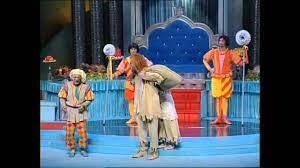
As Passover approaches the word ‘tradition’ assumes increasing prominence in the lives of Jews – and Israelis. Each ethnic group, and each family, has its own traditions regarding the way the festival is celebrated (cue musical interlude ‘Tradition’ from ‘Fiddler on the Roof’).
This was brought home to me with added intensity when the Israeli millionaire in space (he is not an astronaut), Eitan Steva, was interviewed on TV. When asked how he was going to celebrate the Seder in space he replied that gefillte fish is being provided for him. Gefillte fish? Where in the Bible is gefillte fish mentioned? Not at all, of course. In fact, in the orthodox German-Jewish (‘Yekke’) family of my birth no such dish was ever served at the Seder table. When I married into a family originating from eastern Europe it transpired that that particular dish was considered an essential, if not vital, part of the Seder meal. The centrality of that item was presumably connected with the nature of the food available to the residents of that region, but how and why it came to constitute a universal and basic necessity of the meal is beyond me.
Other traditions have become embedded in the life of Jews from different parts of the world, and this is particularly evident when it comes to rituals associated with religious observance and ritual. And so the (orthodox) Jewish world is divided into two groups: those (of Sephardic origin) who eat pulses on Passover and those (of Ashkenazi origin) who abjure all pulses on Passover. This rift goes back to rabbinic rulings in ancient times, and one might have thought it would be possible to find a solution for overcoming it. But so far no rabbi has dared to venture into this legalistic minefield. Thus, observant relatives of offspring who have married someone whose Passover meal tradition allows pulses will eschew those homes during the festival. I don’t know whether to laugh or cry when I hear about these traditions, but it strikes me as unnecessarily divisive in these modern times.
Another tradition – and thankfully one not associated with religious practice – struck me last week when I took my adult son and his six-year-old daughter to a performance of the Israeli musical ‘Utzli-Gutzli.’ The text of the play, which is based on the Grimm Brothers’ fable, ‘Rumpelstiltskin,’ was written some sixty years ago by Avraham Shlonsky, one of Israel’s leading literary figures, with music by Dubi Zeltser. Shlonsky’s grandiloquent rhyming couplets in not-always-accessible Hebrew might be considered too difficult for Israeli children, but the colourful set and costumes together with spirited acting and singing by the cast of the Cameri Theatre enabled the audience to grasp what was happening and to enjoy the pranks and jokes, as well as to participate in the singing when encouraged to do so by the actors,
There wasn’t an empty seat in the auditorium, which consisted of children of all ages, accompanied by parents and grandparents who doubtless themselves had seen the play in the past – when they, too, were children. I remember taking my daughter to it over forty years ago, when she was at the age my granddaughter is now. And although I was familiar with the general idea of the play, I wasn’t bored for a minute on seeing it again. The originality of the text, the virtuosity of the acting and the general joie-de-vivre of the production made the whole experience an enjoyable one (though my granddaughter was afraid when things didn’t seem to be going well for the poor baker’s daughter, who was required to spin straw into gold).
Another tradition, and one which, I hope, will not serve to create division among Jews in Israel.
Traditiion

As Passover approaches the word ‘tradition’ assumes increasing prominence in the lives of Jews – and Israelis. Each ethnic group, and each family, has its own traditions regarding the way the festival is celebrated (cue musical interlude ‘Tradition’ from ‘Fiddler on the Roof’).
This was brought home to me with added intensity when the Israeli millionaire in space (he is not an astronaut), Eitan Steva, was interviewed on TV. When asked how he was going to celebrate the Seder in space he replied that gefillte fish is being provided for him. Gefillte fish? Where in the Bible is gefillte fish mentioned? Not at all, of course. In fact, in the orthodox German-Jewish (‘Yekke’) family of my birth no such dish was ever served at the Seder table. When I married into a family originating from eastern Europe it transpired that that particular dish was considered an essential, if not vital, part of the Seder meal. The centrality of that item was presumably connected with the nature of the food available to the residents of that region, but how and why it came to constitute a universal and basic necessity of the meal is beyond me.
Other traditions have become embedded in the life of Jews from different parts of the world, and this is particularly evident when it comes to rituals associated with religious observance and ritual. And so the (orthodox) Jewish world is divided into two groups: those (of Sephardic origin) who eat pulses on Passover and those (of Ashkenazi origin) who abjure all pulses on Passover. This rift goes back to rabbinic rulings in ancient times, and one might have thought it would be possible to find a solution for overcoming it. But so far no rabbi has dared to venture into this legalistic minefield. Thus, observant relatives of offspring who have married someone whose Passover meal tradition allows pulses will eschew those homes during the festival. I don’t know whether to laugh or cry when I hear about these traditions, but it strikes me as unnecessarily divisive in these modern times.
Another tradition – and thankfully one not associated with religious practice – struck me last week when I took my adult son and his six-year-old daughter to a performance of the Israeli musical ‘Utzli-Gutzli.’ The text of the play, which is based on the Grimm Brothers’ fable, ‘Rumpelstiltskin,’ was written some sixty years ago by Avraham Shlonsky, one of Israel’s leading literary figures, with music by Dubi Zeltser. Shlonsky’s grandiloquent rhyming couplets in not-always-accessible Hebrew might be considered too difficult for Israeli children, but the colourful set and costumes together with spirited acting and singing by the cast of the Cameri Theatre enabled the audience to grasp what was happening and to enjoy the pranks and jokes, as well as to participate in the singing when encouraged to do so by the actors,
There wasn’t an empty seat in the auditorium, which consisted of children of all ages, accompanied by parents and grandparents who doubtless themselves had seen the play in the past – when they, too, were children. I remember taking my daughter to it over forty years ago, when she was at the age my granddaughter is now. And although I was familiar with the general idea of the play, I wasn’t bored for a minute on seeing it again. The originality of the text, the virtuosity of the acting and the general joie-de-vivre of the production made the whole experience an enjoyable one (though my granddaughter was afraid when things didn’t seem to be going well for the poor baker’s daughter, who was required to spin straw into gold).
Another tradition, and one which, I hope, will not serve to create division among Jews in Israel.
April 8, 2022
The Irony of it All
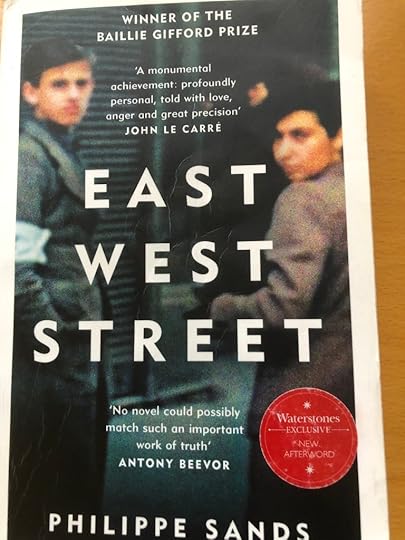
Whether you call the city Lvov, Lviv or Lemberg, the place that was once a centre of culture and commerce in Ukraine is currently the scene of destruction and devastation. Now that the whole of Ukraine is being subjected to attack by Russia, I am reminded of the book East West Street; on the Origins of ‘Genocide’ and ‘Crimes Against Humanity’ which I read and reviewed here recently. The author, Philippe Sands, a renowned expert in international law, investigated the origins of those two seminal legal terms. However, the book is no dry-as-dust academic study as the author has managed to introduce the human element in the form of the two Jewish legal experts who originated from Lvov, just as his own family did.
Those two legal terms were employed in the 1946 Nuremberg trials of a number of Nazi leaders who were held accountable for the atrocities inflicted on the populations of the countries their regime invaded, occupied and plundered, and whose Jewish populations they systematically murdered.
The two Jewish lawyers whose efforts culminated in the introduction of the terms ‘genocide’ and ‘crimes against humanity’ were originally from the Ukraine and both studied law at Lvov University, although not at the same time. Hersch Lauterpacht, who coined the term ‘crimes against humanity,’ managed to leave Ukraine, ending up in the UK, where he was given a prestigious academic position at Cambridge University. Rafael Lemkin, the other Jewish legal expert, made his way to the USA in 1939 and forged a distinguished academic career for himself there.
The two men never met in person, though doubtless knew of one another’s work. But the inevitable conclusion that the reader cannot help drawing after reading this book is that fate happened to bring two men of intelligence, insight and understanding who were also Jews to reach conclusions that have had a lasting impact on international law.
There is talk now of bringing those involved in the current war in Ukraine to justice at the International Criminal Court in The Hague. That court was founded as a direct result of the work of Lauterpacht and Lemberg. Whether anyone will ever actually be put on trial is doubtful, but there is no escaping the irony of the situation that draws together the fate of Ukraine with the work of its former citizens. And, of course, through the convoluted course of history, combines the effect of Nazi crimes with Jewish intellect on world events.
March 31, 2022
Living with Cognitive Dissonance

It goes without saying that a certain amount of cognitive dissonance is inevitable in the psychology of anyone living in western society in this day and age. Our mental balance depends on finding a way of coping with the situations in which we find ourselves.
Recent events in Israel and elsewhere have led me to wonder if there is a way of quantifying the extent, or amount, or intensity of the phenomenon. Would it be fair to say that life in Israel gives rise to more or less cognitive dissonance? When I immigrated to Israel in 1965 the country was smaller, life was simpler and yet there were constant threats from the surrounding Arab countries, leading eventually to the outbreak of war in 1967. That marked a turning point in Israel’s existence, with the necessity of maintaining some semblance of order in the areas that had been conquered in the course of that war, known variously as conquered or liberated, Judea and Samaria or the West Bank (of the kingdom of Jordan, which had controlled it till then). Although I try to avoid making political statements, I can’t avoid pointing out that no one had raised the idea of a Palestinian state till then.
Suddenly a few weeks ago the attention of all Israelis was diverted away from the events in Ukraine to a series of terrorist attacks inside Israel. Towns that had been considered free of tension between the Arabs and Israelis living in and around them became targets of killing sprees by Arab citizens who had till then been considered part of Israeli society. The Arabs who live in Israel have the same rights as the Jews; they serve in the IDF and the police force as well as sending their representatives to the Knesset and even forming part of the coalition government.
Ironically, the day of the third and most serious attack was the first day of sunshine and warmth after an unusually long, cold and rainy winter. Knowing that we had to be in Tel Aviv in the evening to attend an opera, my husband and I decided to spend the day there. We had lunch in a restaurant overlooking the sea and took our dessert sitting on a comfortable couch beside the promenade, watching young parents with babies, youngsters on bikes and older people with zimmer frames strolling in the sunshine.
Tel Aviv has a lot to offer, if one can manage to navigate the traffic. We contrived to spend time in the Tel Aviv Museum visiting some of the excellent exhibits there, and ended the day with a performance of Mozart’s the Marriage of Figaro. The acting and singing were excellent, and acclaimed opera director David Pountney managed to introduce all manner of sly and entertaining elements into the show, including placing a (fake) anti-tank missile in the hands of Cherubino in an allusion to events in Ukraine.
It would have been a perfect day had it not been for the news of the attack in Bnei Braq and the five victims – both Arabs and Jews – that we heard on the car radio as we drive back to Jerusalem. And that just about sums up life in Israel. Beauty, tranquillity, culture and happiness at one moment, and murder, brutality and hatred the next.
There have always been attacks and murders in this part of the world, the birth of the state of Israel was not an easy one, and yet the country has survived and even thrived. Coping with cognitive dissonance is only part of the price we have to pay for having a country of our own.
March 23, 2022
In This Day and Age
I
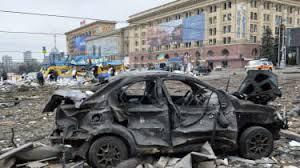
We thought the age of war in Europe was over. We thought that people of intelligence and culture had learned to cooperate and at least to prevent the senseless destruction of property and lives. We thought that the lessons of the past had been learned, and that the urge to overrun and rule others had been tamed. At least in the so-called civilized world.
But we were wrong.
We knew that wars and senseless killing still continued in distant lands, in Africa and other distant parts. But not on our doorstep. Not in places that had learned the lessons of the past.
I suppose we should be grateful for the seventy-odd years that have passed without war breaking out in Europe. After all, there have been tensions and disagreements between countries. But most of those were settled through discussion and negotiation. No country took up arms against another, despite the long history of constant war, enmity and the desire for supremacy that has formed the Europe of today. The conclusion of the Second World War in 1945 marked a turning-point in the way international relations were conducted in Europe. Eventually, thanks to far-sighted and brave leaders, the European Union was formed, bringing once-warring nations into alignment and cooperation with one another.
It would be foolish to put all the blame for the current conflagration in Ukraine on one side. Undoubtedly, Russia is the aggressor, but its claims are not entirely baseless. My first thought upon hearing about Russia’s invasion of Ukraine was of the Cuban Missile Crisis of 1961. At the time it seemed that America’s demand that Russia remove its long-range missiles from Cuban soil were justified. I lived through that terrifying time, when it seemed that the world was on the brink of another world war. But fortunately, the two leaders involved, Kennedy and Khruschev, managed to reach a solution that avoided conflict.
Sadly, that has not been the case this time.
And so every night our TV screens are filled with scenes of human misery, displacement and loss. To this is added the wholesale destruction of towns and villages, the unending stream of refugees and the enormous cost in material and human devastation.
Is Russia right to wreak havoc on Ukraine in order to make its point? Of course not. Nothing justifies the terrible sights to which we are witness. The question remains: could not some other, better way of resolving the dispute have been found? The efforts currently being invested by various parties, including our own prime minister, Naftali Bennet, to mediate between the warring parties, have not borne fruit so far. But perhaps one day soon they will. All that is required is for each side to take a step back.
Khruschev decided not to plunge the world into war in 1961, and his name will go down in history for having had the moral courage to do so. Kennedy was prepared to stand his ground, but also to make concessions in order to encourage Khruschev to go towards him.
It seems so simple now, looking back, but it was a very tense few days at the time. I remember saying goodbye to my fellow-students on the Friday and wondering if London and our university would still be in existence on the following Monday.
All we can do now is extend what humanitarian aid we can and watch from the sidelines as death and destruction are rained down on people whose only desire was to make a life for themselves and their children. But in this day and age that isn’t enough. One has to be able to make compromises and concessions in order to achieve that life.
If you enjoyed reading this, please consider reading one of my 8 novels, all available on Amazon, and from my website: www.shefer-vanson.com
March 17, 2022
The Importance of Pawns; Chronicles of the House of Valois
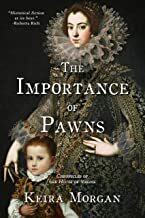
In this book by Keira Morgan the year is 1514 and the French monarchy lives in splendour, moving between its various palaces and castles throughout the territory known as France. The populace ekes out a living from the land or from serving and providing services to the nobles. Participation in war is another form of employment for the impoverished males of the region, offering the prospect of enrichment through pillage and plunder, provided that death does not prevent them from achieving their aim.
The book (which I read as an ebook) opens as Countess Louise d’Angoulême admires her image in the fine Venetian mirror her son, Francois, has given her. She feels that he has acknowledged his filial devotion to her by means of the costly gift. Aware of the impending death of Queen Anne, the wife of the elderly King Louis XII, Countess Louise is determined to further the marriage of her son to Princess Claude, thereby installing him as heir to the throne.
The machinations that Countess Louise sets in motion in order to achieve her aim are presented in a lively and convincing way throughout the novel. The author undoubtedly knows her history and has also done extensive research into the life and times of the French court in the sixteenth century, bringing to life the characters who throng the court. This applies especially the principal characters – fifteen-year-old Princess Claude, her sister four-year Princess Renée, and their governess and confidante, Baronne Michelle de Soubise. Matters become even more complicated when the dying Queen Anne appoints Countess Louise d’Angouleme governess of Princess Renée, much to the consternation of young Princess Claude.
The book provides a graphic account of life at court, the way policies are pursued, royal marriages are arranged and how the relations between the various individuals proceed as they try to make their way through the convoluted paths of statecraft and the conduct of everyday life.
The characters are portrayed as well-rounded individuals, though to what extent their thoughts and emotions really reflect what happened at the time is unknown. We know for sure that after Queen Anne’s death, King Louis XII married Mary Tudor, younger sister of England’s King Henry VIII, and that no children were born to them. Consequently, after his death Mary could return to England and marry the member of the British nobility with whom she was romantically involved.
The author has done an excellent job of bringing that period and those individuals to life, with attention to detail regarding dress, behaviour and the way matters of state were conducted. Presumably there is some veracity in the events depicted. I recommend the book to anyone interested in the intricacies of French history and life at court in the sixteenth century.
March 9, 2022
To Be a Refugee
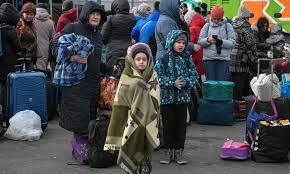
I was born in London in 1942. My parents were refugees, stateless and penniless. The fact that I was born where and when I was gave me the right to remain in England, and hence also enabled my parents to remain there. It was wartime, London was being bombed, but it was still a safer place than their homeland of Germany, where their parents were being carted off to concentration camps and murdered at that very time. That would have been their fate, too, had they remained there. They had committed the crime of being born Jews.
Watching television today, with its grim images from Ukraine of men, women and children, both old and young, traipsing for hours and days through frozen wastes and towns full of destroyed buildings, in a desperate search for shelter and refuge, brings to life in the most graphic manner the ordeal that throughout the generations my ancestors and those of most other Jews, somewhere along the line, doubtless went through. After all, Jews have not always been made to feel welcome in the places where they may have once settled and, under the circumstances of the time and the whims of whatever ruler or government were current at the time, were forced to uproot themselves over and over again and try to find a new resting place.
This went on for two thousand years until the second half of the twentieth century, when Israel was founded.
It’s true, over the years some Jews found a relatively safe haven in various western countries, America, England, western Europe and the Scandinavian countries first and foremost. But let me remind those who think that the gates of those countries were opened wide for Jews trying to find a new home that in America the quota system introduced at the beginning of the twentieth century restricted entry to Jews from Europe to those who could find a guarantor to put up the fee required by the authorities. Not everyone had relatives there who could and would provide the costly ‘affidavit’ which was the sine quo non for entry into the country.
For every Jewish refugee seeking to enter England a sum of money had to be guaranteed either by persons residing in the country or they had to bring it in themselves. Since the Nazis stripped most Jews of every penny they owned, as well as preventing them from taking money out of the country, this served as an additional obstacle to emigration and absorption in another country. My parents were in the fortunate position of having relatives in England who – albeit reluctantly and belatedly – put up the money to guarantee their entry. This was only after Kristallnacht, the Pogrom action throughout Germany, when synagogues and Jewish businesses were destroyed and Jewish men arrested and sent to concentration camps. Most Gentiles were not targeted by the Nazis, so there was no need for them to seek refuge elsewhere.
Even for the acclaimed Kindertransport project, when ten thousand unaccompanied Jewish children from Europe were allowed into England, each child had to be guaranteed by a family there that was ready to take them in or, alternatively, by one of the various Jewish or Quaker organisations that undertook to place the children upon arrival. The UK government’s decision to allow the children into England was made contingent upon their not becoming ‘a burden on the British taxpayer.’
And so, although it sounds unpleasant, the demand by the Israeli government for refugees from Ukraine to be guaranteed by relatives in Israel or produce a not inconsiderable sum of money is not so unreasonable, or at least not unprecedented. This has always been the way countries have tried to regulate the influx of others seeking a new home or sanctuary from the horrors that await them if they stay where they are.
The existence of Israel guarantees some form of protection for Jews wherever they might be, and now the country has opened its gates to a limited number of non-Jews too. There is a lot to be said for the magnanimity and generosity of this small country in allowing those in need to gain entry, but the need for a Jewish state remains the ultimate objective that Israel’s leaders should bear in mind.
March 3, 2022
Ukraine
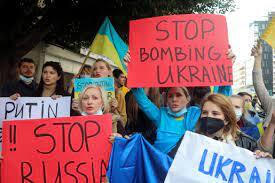
One’s heart goes out to the men, women and children caught up in the devastating and unprovoked attack on their country by their powerful and greedy neighbour. The sight of women carrying children as they tramp along frozen roads and fields in an attempt to find shelter and safety is truly heartbreaking. The scenes of destroyed buildings and rubble-filled streets cannot fail to elicit our sympathy and pity.
Ukraine is the place from which my husband’s family originated. When just-married Rachel and Mordechai Shifris left their homeland and families in the early 1930s, having met on Hachshara in Lvov, they came to what was then Palestine as Halutzim. They both left extensive families behind which they were never to see again.
Ukraine, or the part of the world known variously as Galitzia or Poland, had been soaked in the blood of Jews for many years. The Nazis who invaded and conquered the territory in WWII had no difficulty in identifying, rounding up and murdering Jews. The local population was only too happy to help. The history of anti-Semitism in Ukraine and eastern Europe in general, goes back a long way.
I’m not trying to pin the crimes of their ancestors on the current generation of those now being forced to flee, but I find it hard to detach my view of current events from my knowledge of those of the past. The czars of Russia, who ruled most of the surrounding area, were notoriously anti-Semitic, confining Jews to the Pale of Settlement, and preventing them from participating fully in civic life. The Orthodox church did nothing to stop pogroms and bloodshed, even encouraging the local communities in their murderous rampages.
The Ukrainian nationalist leader, Simon Petliura, was at the forefront of the political movement agitating against the Jews in the early part of the twentieth century. Instigating pogroms all over Ukraine in the name of Ukrainian nationalism, he caused the deaths of many thousands of Jews, the destruction and theft of their property, accompanied by unrestrained assaults on women and children.
A few years ago I picked up a book entitled ‘Adieu Volodia’ at a second-hand fair in central France. This turned out to be an engaging novel (in French) by Simone Signoret describing the lives of immigrants from eastern Europe in Paris in the 1920s. Little did I imagine that I would be thrust into the heart of the struggle of Jews to escape the hardships of their former In the book I read that the arrival in Paris of Petluria caused consternation and fear among the capital’s Jewish denizens, and it was only his assassination by a Jewish gunman called Sholom Shwartzbard there in 1927 that allayed their fears. The Volodia of the title was a cousin of one of the main characters who was killed in far-away Ukraine.
My sister-in-law, who belongs to a group of people in Israel who keep alive the memory of Chortkow, the town in Ukraine from which their families originated, visited the area with the group a few years ago. She found neighbours who remembered her parents’ families, but of course there was nothing material to recall where they had lived and what they had once possessed. Her opinion of Ukraine and the Ukrainians is far from sympathetic, and I’m sure that many people whose families originated from that part of the world are in agreement with her.
So, while I wish no ill to the unfortunate inhabitants of current-day Ukraine, the shadow of the past refuses to leave me. Today the refugees are ordinary folk, just like you and me, who have been forced to leave their homes in order to seek safety. But not so long ago it was our kith and kin who had to run away or be killed by their neighbours and countrymen.
February 24, 2022
The Human Condition

My TV consumption is usually limited to the (extended) evening news, plus the occasional cookery programme, provided it does not involve a competition. I do not watch reality TV or competitions of any kind.
But the times they are a-changing, and Europe is teetering on the brink of something ominous. And so, one afternoon I left the book I was reading and joined my OH to watch a programme on the History Channel. Within a few minutes I found myself drawn into a fascinating documentary about the USA’s preparations for WWII.
As we all know, the USA, led by President Roosevelt, preferred to stay out of the war in Europe, and it was only after December 7, 1941, when Japan attacked the American fleet in Pearl Harbor, that the Americans joined in the war. However, this was not something to be entered into lightly and the necessary armaments and instruments of war had to be manufactured as rapidly and efficiently as possible.
I started watching the programme only after the beginning so don’t know what it was called, all I know is that it proceeded to show in a thorough and extensive way how the various logistical problems were solved. America was the most advanced industrialised country in the world, but was not geared up for producing weapons of war. By dint of the resolve of Roosevelt and the men working with him, American industry was mobilized to manufacture weapons of war rather than the goods and services that had hitherto been produced. Thus, the assembly lines and resources of the Ford factory in Michigan that had been churning out automobiles were converted in order to manufacture aeroplanes. This was a far from simple undertaking, but eventually, by cooperating and combining resources with other manufacturers the ultimate result was the Douglas bomber, which played a seminal role in the Allied victory.
Similarly, the American fleet did not have enough ships and aircraft carriers to carry the war to the Atlantic Ocean. The shipyards in the San Francisco Bay area were too small to produce the quantity and size of vessels required. Here, too, a concerted effort combined with innovative shipbuilding practices enabled the shipyards to produce 1,400 vessels in three years, compared with only 23 ships in the decade prior to 1940.
In addition, the Chrysler plant in Detroit was converted from the manufacture of automobiles to the production of tanks. Women began working in the factories and on the assembly lines, replacing the men who had been called up.
Altogether, a concerted effort of adaptation, ingenuity and cooperation enabled America to fight in Europe and eventually, together with Britain and the Allies, to win the war.
On the evening of the same day I watched a programme on Israeli TV showing in graphic form the events that led up to the destruction of Jerusalem and the Temple by the Romans in the year 70 C,E, The colourful images and dramatic recreation of the events leading up to the final cataclysm depicted the rivalry and enmity between the different groups of Jews in the city, so that each sector fought against the other rather than combining forces against the Roman army. The defeat that emerged in the final event constituted an object lesson in how the folly, vanity and stupidity of human beings can lead to disaster.
Thus, two TV programmes depicting events two thousand years apart, and a huge contrast between two approaches to resolving a problem, taught me an important lesson about the human condition.
If you enjoyed reading this, please consider reading one of my 8 novels, all available on Amazon, and from my website: www.shefer-vanson.com
February 17, 2022
Mes Amis, Mes Amours
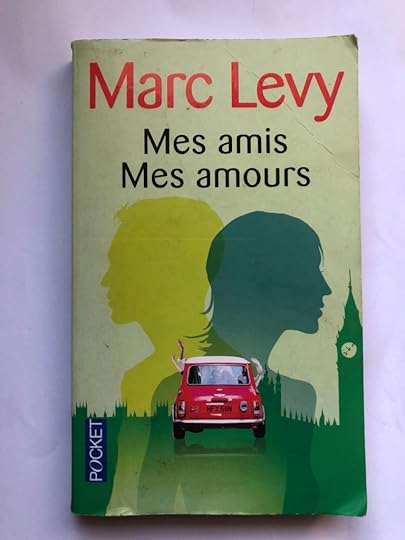
In this novel by Marc Levy two Frenchmen in their thirties, one separated the other divorced, and each one with custody of a child, are living in London. As the book begins they are sitting in a park in Paris, watching children play and guessing how long the man on a nearby bench has been divorced. (This book is in French, and is part of my quest to read in that language from time to time.)
Antoine, who is divorced, has already established himself in London, where he has opened an architectural office and has acquired part of a house in a pleasant Kensington street. His friend, Mathias, has just lost his job in a Paris bookshop, and Antoine suggests that he join him in London just as an opportunity arises for him to take over a bookshop specializing in French books in the same area. Mathias duly moves to London (in pre-Brexit times this presented no great bureaucratic difficulties, and the Eurostar train made travel between London and Paris quick and hassle-free), joining Antoine in his house, which they convert from two flats into one unit.
In addition to the bookshop and the architectural office, the quiet street contains a café-restaurant run by Yvonne, an older woman who is also from France, as well as a flower-shop run by Sophie, who is younger (and French too). Various other (non-French) characters make brief appearances in the narrative, mainly Mr. Mckenzie, who helps to manage Antoine’s business and is also sweet on Yvonne, and Mr. Glover, the elderly Englishman who is the former owner of the bookshop taken over by Mathias, and who is also very fond of Yvonne. Mr. Glover retires to a cottage somewhere in Kent, and Yvonne promises to visit him there one day.
The children, Antoine’s son Louis and Mathias’ daughter Emily (both aged about eight), are good friends, growing up together as brother and sister, and playing an important part in the lives of their respective parents. The two go to school together, play and watch TV together after school, and constitute objects of affection as well as occasionally also something of a burden for their respective fathers.
When Mathias meets Audrey, an attractive French journalist, matters become complicated, impinging on the friendship between the two men. Among the house rules imposed by Antoine was that they would not use babysitters or bring women into the house. Naturally, it becomes increasingly difficult for Mathias to adhere to this injunction, and his frequent infringements of it begin to affect the relations between the two friends. Matters are further complicated by the fact that Mathias suffers from vertigo, and is unable to tolerate ascending in a life to a restaurant on the top of the high-rise OXO building. Among the more endearing facets of the book are the frequent references to actual physical locations in and around London, presumably based on the author’s knowledge.
Antoine and Mathias take their children on a short vacation to Scotland, where they visit and stay at various castles in search of the ghosts which supposedly haunt them. They devise a plan to renovate Yvonne’s run-down café, and this venture is achieved over the course of the weekend when she finally goes to visit Mr. Glover in Kent. What happens then is unexpected, and as the book draws to a close all the individuals have reached decisions about what they are going to do with their life.
In the epilogue, grown-up Louis and Emily are sitting on a park bench, taking bets on how long the man on a nearby bench evidently caring for a child on a swing has been divorced.
While not being particularly profound, this book gives one an insight into the workings of the mind of French men, as well as some idea of what life was like for French exiles living in London on pre-Brexit times.
If you enjoyed reading this, please consider reading one of my 8 novels, all available on Amazon, and from my website: www.shefer-vanson.com



